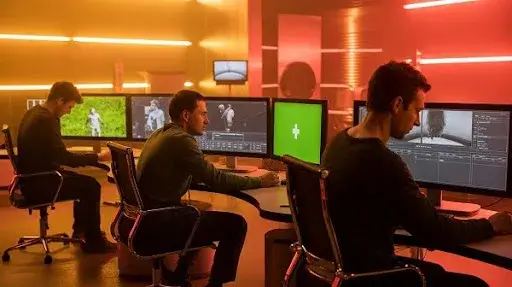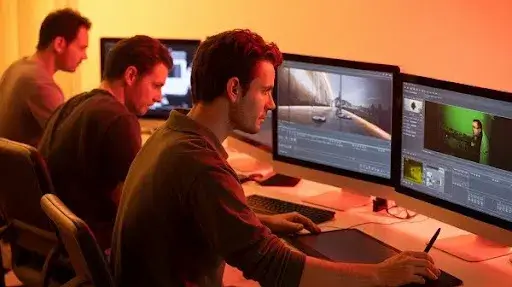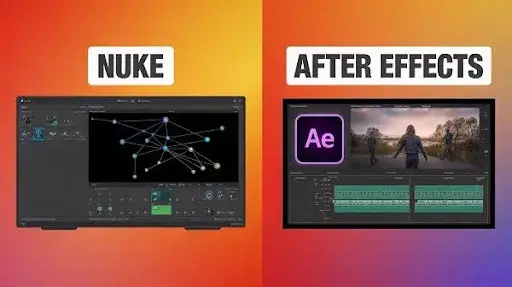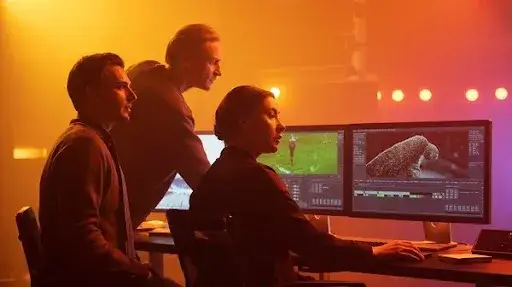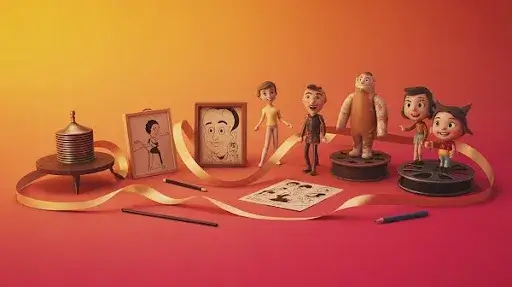Some of the most powerful visuals on screen don’t come from huge sets or costly stunts. They’re built inside compositing software. Keying and integration in VFX is where illusion turns into something believable, where imagination meets precision.
Think of a soldier running through smoke, a spaceship flying past clouds, or a creature standing in a real street. None of it works unless these two techniques sync perfectly.
For anyone who’s ever worked in visual effects compositing, the real magic doesn’t happen during the shoot. It happens after. The task is to blend reality with creation so seamlessly that the viewer never questions what’s real and what isn’t. That’s why keying and integration aren’t just steps; they’re the foundation of modern VFX work.
At Prolific Studio, a top-tier 3D video animation company, this process is both technical and creative. It’s less about clicking tools in Nuke compositing or After Effects and more about learning how to see, how light reacts, how colors shift, and how motion connects. Once you understand that, software simply becomes your paintbrush.
Understanding Keying and Integration in VFX
Nothing in compositing feels real until it blends right. Keying separates your subject from its background, usually using a green screen cleanup process. Integration takes that extracted subject and fits it into a new setting so naturally that it looks filmed on location.
These two steps decide the success of a shot. VFX compositing relies on them for clarity, balance, and realism. Poor keying can make even the best-rendered scene look fake. Weak integration makes audiences sense something’s off, even if they can’t explain why.
When both are executed well, everything feels effortless, and that’s what every artist in their VFX artist journey strives for.
From Green Screen to Clean Plate
Ask any compositor, and they’ll admit, getting a clean key can test your patience. Building a VFX clean plate means filling in the spaces that were never shot. You’re matching dust, reflections, and film grain so that nothing breaks the illusion.
In Keying in Nuke, tools like IBKColour or Keylight help isolate the foreground actor. But what sounds simple rarely is. Light shifts, motion blur, and color spill often create messy edges. Even a faint green tint on hair or metal can ruin the shot if ignored.
Compositors usually build their keys in layers, one pass for hair detail, one for body, one for edges. It’s like carving with light instead of clay.
At Prolific Studio, artists prefer procedural workflows to keep results consistent. Every compositor eventually develops their own rhythm, but one rule never changes: no edge should give away the trick.
Integration: The Hidden Skill Behind Realism
Once the subject is keyed out, it’s time to integrate, the stage that breathes life into everything. Integration isn’t just placing one layer on another. It’s about matching the lighting, depth, and tone so precisely that everything looks like it was captured through the same lens.
Real integration demands an understanding of light and texture. Matching shadows, reflections, and perspective takes a trained eye and plenty of practice.
Artists use lighting and rendering in VFX to recreate real-world illumination. A light wrap around the subject’s edges can help it sit better in the scene. Small choices, a flicker from an explosion, the glow on a wet surface, decide whether a shot feels authentic or artificial.
The best integration goes unnoticed. If the viewer spots the effect, it has failed.
Learning the Craft: A VFX Artist’s Journey
Nobody becomes a skilled compositor overnight. It’s usually hours of testing, failing, and trying again. Most artists start with a beginner compositing project, maybe a short scene, a test key, or a personal VFX breakdown example to sharpen their eye.
Progress feels slow until something clicks. You’re cleaning up a key one day and suddenly realize why a shadow feels wrong or how color contrast affects depth. From that point, you start seeing films differently. You notice temperature shifts, reflections, and smoke trails you never cared about before.
At Prolific Studio, artists are encouraged to work on side projects between client work. Those personal experiments often turn into breakthroughs, the kind that sharpen instincts and shape artistic identity.
Building a Shot from Scratch
Say you’re working on a shot with an actor dodging falling debris, except the background doesn’t exist yet. That’s when 3D animation and VFX blend together through VFX compositing.
First comes camera tracking, which matches virtual movement with live footage. Then the compositing pipeline kicks in, layering each element: background, actor, dust, sparks, and light.
Using VFX integration techniques, artists mix practical stock elements with custom 3D renders. The hardest part is balance; every light, every reflection must behave as if it’s part of the same moment.
When it all fits together, you stop noticing the technique. It feels filmed, not composited, and that’s when you know the shot works.
Common Compositing Challenges and Solutions
Even the best artists face frustrating moments. Each project brings its own set of puzzles to solve, part of what makes the craft addictive.
1. Mismatched Lighting
Fake lighting ruins believability instantly. The fix? Match your highlights and shadows with the plate’s original light direction and temperature.
2. Green Spill
A light green reflection on skin or hair can be hard to hide. Most compositors use despill tools or custom color corrections to neutralize it.
3. Grain and Noise Mismatch
Film plates and digital renders rarely share the same texture. Adding realistic film grain and adjusting gamma helps them align.
4. Perspective Issues
If vanishing points don’t match, everything feels wrong. Using proper 3D camera tracking solves that.
5. Edges That Look Too Clean
Perfect cutouts look fake. Adding motion blur or a faint light wrap blends them back in.
Each issue teaches something new. Each solution improves your grasp of visual effects compositing and builds confidence for tougher shots.
From Technical to Emotional Storytelling
VFX isn’t just about edges and lighting. It’s about storytelling. Every flicker of fire, dust particle, or glowing sign adds emotion to a frame.
Compositors don’t just fix images; they shape how an audience feels. A solid VFX showreel doesn’t just show technical skill; it reveals sensitivity to tone and rhythm.
For artists and students alike, one lesson stands out: learn the software, then trust your instincts. Nuke compositing or After Effects are just tools; it’s your sense of mood and timing that makes the frame come alive.
Nuke vs After Effects: Which One to Use?
The compositing software comparison (Nuke vs After Effects) debate is as old as VFX training itself.
After Effects is friendly and fast, perfect for motion graphics, 2D animation, or simple keying tasks. It’s easy to learn and great for smaller projects.
Nuke, however, is the professional standard. Its node-based system gives more control and precision, making it ideal for high-end film work and complex VFX compositing pipelines.
For serious compositors, learning Nuke compositing is almost mandatory. Studios like Prolific Studio depend on it because it can handle complex workflows without losing quality.
Both have their purpose. Start with After Effects, then move to Nuke as you grow. The more control you have, the better your storytelling gets.
How VFX Integration Makes the Unreal Feel Real
The best visual effects aren’t the flashy ones; they’re the ones you don’t even notice. VFX integration is about blending the imaginary and the real until both speak the same cinematic language.
A mistake many beginners make is obsessing over clean edges and ignoring storytelling. A perfect key doesn’t mean much if the object doesn’t match the scene’s mood or perspective. Visual balance, composition, and rhythm matter as much as the technical work.
To make everything sit together, professional compositors use depth control, color harmony, and exposure matching. By adjusting shadows, highlights, and haze based on the camera’s lighting, the new element starts to “breathe” inside the shot. Adding subtle motion blur or atmospheric diffusion deepens the illusion.
But true integration doesn’t stop at visuals. It continues into color grading and even sound design. Imagine a spaceship gliding through a city; it looks real only when the glass windows reflect its lights or nearby neon signs flicker as it passes. Every visual should have a physical echo in the scene. That’s how the audience believes it.
Inside a VFX Scene: A Simple Breakdown
Let’s take a classic scenario, a car chase on a rainy night. The actor and car are real, but everything else, from the skyline to the storm, is digital.
Keying: The footage is shot against a green screen. Artists isolate the actor and car using Nuke, cleaning edges and removing any color spill.
Clean Plate: A base layer of the wet road is created to capture reflections and splashes.
3D Integration: The rain, cityscape, and water effects are added through 3D rendering software.
Lighting and Rendering: Directional lights mimic the overcast glow, and reflections move with the camera’s motion.
Final Compositing: Motion blur, color correction, and lens effects tie everything together.
The final result doesn’t just show a chase; it makes you feel the chaos and speed. That’s the emotional depth good compositing brings.
Why Lighting and Rendering Decide Everything
Lighting is the heartbeat of compositing. Without it, even the most detailed 3D model looks artificial. Every bounce, glow, and shadow must follow the same physics as the live-action world.
For example, if a character walks past a neon sign, that colored light should reflect on their clothes and skin. Miss that, and the illusion collapses. In Nuke compositing, artists use multiple passes, diffuse, specular, and shadow, then fine-tune them until the lighting feels natural.
Great compositing goes beyond accuracy. It’s about emotion. Warm light builds comfort; cold light builds tension. Choosing between them shapes how a viewer feels about a moment. That emotional storytelling through light is something Prolific Studio puts at the core of every project.
The New-Age Compositing Pipeline
Technology keeps changing the way artists work, but the foundations haven’t moved an inch. Clean keying, sharp tracking, and balanced integration still define the job.
Modern pipelines now blend 3D animation and VFX with machine learning tools. AI can help clean green screen edges, remove color spill, or rebuild missing pixels in seconds. But automation doesn’t replace taste; it only speeds up what an artist already understands.
At Prolific Studio, technology supports the craft; it doesn’t lead it. Artists are trained to use AI when it saves time, but to trust their eyes when it comes to realism. Software evolves, but perception is timeless.
Growing as a VFX Compositor
For beginners, compositing can feel like a mountain. The trick is to climb one shot at a time. Don’t rush to make an entire film. Instead, take a few seconds of footage and make that one frame shine.
Build your VFX showreel with intention. Recruiters don’t look for the biggest explosions; they look for control. A clean key and smooth integration often speak louder than heavy effects.
You’ll fail often. You’ll overcorrect, underlight, or forget a reflection. But that’s the process. Each failure sharpens your eye. Every project adds another layer of instinct, and that’s what eventually builds mastery.
At Prolific Studio, collaboration plays a big part in that journey. Artists regularly review each other’s shots, share fixes, and analyze what made a scene work. It’s an environment built on learning, not competition, and that’s where great compositors grow.
Frequently Asked Questions
What does keying mean in VFX?
Keying is the process of removing a background, usually green or blue, so that a subject can be placed into another environment. It’s the first step toward creating a seamless shot.
How is integration different from compositing?
Integration focuses on making all visual layers, from lighting to shadows, belong to one believable scene. Compositing is the overall process that includes integration.
Which software do professionals use?
For quick motion graphics, After Effects works great. For feature-level precision and flexibility, artists prefer Nuke.
How do artists clean up green screen shots?
Through despill tools, clean plate creation, and texture matching. They also adjust film grain to make everything feel part of the same footage.
What’s the hardest part about integration?
Lighting mismatch. Even the smallest error in light direction or intensity can make a scene look fake, no matter how clean the key is.
How can beginners improve their compositing work?
Start small. Study how real light behaves, experiment in both Nuke and After Effects, and don’t be afraid to redo shots until they feel right.
Final Words
The best compositing goes unnoticed, and that’s the beauty of it. When done right, viewers don’t see layers or effects; they see emotion, movement, and story.
Keying and integration in VFX aren’t just technical processes. They’re acts of visual storytelling. You’re not just combining footage; you’re shaping how people feel when they watch it.
That’s what drives the team at Prolific Studio. Every frame is treated like a story worth polishing, from the clean plate to the final render. Because in the end, good VFX doesn’t just look real. It feels real.
Related Articles:

